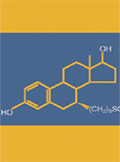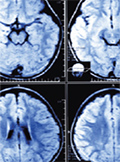The eLitMed.hu medical portal uses computer cookies for convenient operation. Detailed information can be found in the Cookie-policy.
Lege Artis Medicinae - 2017;27(04-05)
Content
[Mazes and compass in prognostic value of cardiovascular risk factors]
[The risk assessment of cardiovascular disease is dispensable in everyday practice, because this disease-group gives the high-est death rates all over the world - in developed countries, in Central European Region, including Hungary. Based on reliable surveys world side, we need in addition to coronary heart disease, stroke has been reckoned today to peripheral vascular disease, type-2 diabetes, and chronic kidney diseases as well. It seems useful to the new name i.e., atherosclerotic cardiovascular diseases. It stands as smoking, hypertension, dyslipidemia risk factors among this group of diseases in the background, but more and more importance is given to visceral obesity, physical inactivity, alcohol consumption and psycho-social status. It has to count with the fact that the individual factors together and appear further worsen to mortality rate. The greatest interference arises because the cardiovascular risk estimation proposed by embodiments of non-uniform principles. Undoubtedly, the resolution of ACC/AHA 2010 was the first correct compass, because the classification and utility values of the factors precisely regulated. But in addition, it is essential that in the risk assessment not only the “global estimation” (tables, other forms) will be conducted, but also other important parameters characterizing the extended factors (vascular structure, obesity, psycho-social status, etc.) - set schedule and regulations - acting on to be carried out. We presented in cardiovascular risk assessment methodology and the most profitable methods of estimation based on the preventive guidelines, extern opinions generally accepted now and own experiences. We propose to modify the risk assessment me-thod.]
[Prevention of invasive meningococcal infection, recognition and first treatment of the disease in primary care]
[In this article, based on a short case report, the authors summarise what you must do and must not do as a primary care physician when suddenly meeting a young patient suspected of having meningococcus infection. Neisseria meningitidis, the meningococcus, is a Gram-negative diplococcal bacterium that is only found naturally in humans. The meningococcus is part of the normal microbiota of the human nasopha-rynx and is commonly carried in healthy individuals. In some cases systemic invasion occurs, which can lead to meningitis and/or septicemia. Invasive disease caused by Neisseria meningitidis is potentially devastating, with a high case fatality rate and high rates of significant sequelae among survivors after septicaemia or meningitis. Between 2006 and 2015 every year there were 34 to 70 cases of the registered invasive disease caused by Neisseria meningitidis, the morbidity rate being 0.02-0.07‱. Half of the diseases (50.7%) were caused by serotype B N. meningitidis, 23.2% were serotype C. ]
[The impact of telemedicine on the development of doctor-patient relationship based on interviews conducted among physicians]
[Introduction - The doctor-patient relationship has always been an essential part of health care, however, in parallel with the integration infocommunication technologies in health care the doctor-patient communication is also transforming. Therefore, the aim of the study is to examine the effect of telemedicine on this relationship. Methods - During the study, we applied qualitative research methods and a total number of 58 semi-structured interviews (45 men, 13 women) were conducted among physicians having experience in telemedicine. The majority of the interviewees were radiologist, general practitioners, and internists. The interview questions concerned that what characterises the doctor-patient relationship in telemedicine. Results - The interviews pointed out that in teleradiology the doctor-patient relationship depersonalises and almost terminates. In this respect, the problem is often the incomplete clinical information about the patient. In turn, telemonitoring can bring a quality change in the doctor-patient communication and through remote contact the patients’ satisfaction, the sense of security, and the doctor-patient relationship will be further enhanced. Conclusions - In accordance with the academic literature - based on the research results - there is no clear evidence that telemedicine would affect doctor-patient communication only positively or only negatively. In some areas of telemedicine, this relationship is reducing (e.g. teleradiology) while in other areas it could be fur-ther strengthened (e.g. telemonitoring).]
[Fulvestrant treatment of breast cancer in a patient with severe comorbidities - a case report]
[Today, despite the increasing number of targeted and immunotherapeutic agents in oncology, the endocrine therapy is still an effective and manageable modality with acceptable safety profile in the treatment of hormone receptor positive breast cancer, especially in patients with multiple severe comorbidities. We present a case of successful treatment with fulvestrant of a woman with breast cancer and non-Hodgkin lymphoma, diabetes and heart failure, that emphasizes the need of personalized treatment. ]
[Plasmaferesis for the treatment of acute pancreatitis related to extreme hypertriglyceridemia]
[We present the case of a 43-year-od woman, with pancreatitis related to extreme - higher than 100 mmol/L - secondary hypertriglyceridemia. Fast clinical improvement and rapid regression of pancreatitis were achieved by appropriate therapy of pancreatitis, the diabetic metabolic disturbance, correcting microcirculation and treating hypertriglyceridemia with plasmapheresis. The authors underline, that the complex therapeutic approach and early plasmapheresis in pancreatitis related to hypertriglyceridemia may prevent necrosis and more severe, even fatal, outcome of the disease. ]
[Changes of the evaulation of scientific publications and researchers based on Hungarian Science Bibliography]
[Different science-metric indicators are great important in evaluating the work of scientists. The authors present the advantages and disadvantages of evaluation numbers which used in the national science in decades and describe in the last year introduced new evaluation criteria. In addition, they analyze and compare the current requirements of the Hungarian Science Bibliography (MTMT) and the Doctoral Schools of the four Hungarian Medical Sciences. Finally, they seek to find out what changes are to be expected later. ]
[Rapprochement to medicine: crossing paths between Franz Alexander and Michael Polanyi]
[Franz Alexander and Michael Polanyi, who were childhood friends, schoolmates at the grammar school as well as at the medical school are renowned scientists, who were dealing with the issue of reciprocity between knower and known. Interrelation of their careers is hardly researched. In this paper, I attend to this unexplored topic. Alexander adopted the Freudian position at the age of 29. Polanyi first had turned into a physical chemist and then, at the age of 45 his calling was in the philosophy of science. I will show in this paper that their achievements are deeply rooted in the culture that they acquiered in their medical studies in Hungary. ]
1.
Clinical Neuroscience
[Headache registry in Szeged: Experiences regarding to migraine patients]2.
Clinical Neuroscience
[The new target population of stroke awareness campaign: Kindergarten students ]3.
Clinical Neuroscience
Is there any difference in mortality rates of atrial fibrillation detected before or after ischemic stroke?4.
Clinical Neuroscience
Factors influencing the level of stigma in Parkinson’s disease in western Turkey5.
Clinical Neuroscience
[The effects of demographic and clinical factors on the severity of poststroke aphasia]1.
2.
Clinical Oncology
[Pancreatic cancer: ESMO Clinical Practice Guideline for diagnosis, treatment and follow-up]3.
Clinical Oncology
[Pharmacovigilance landscape – Lessons from the past and opportunities for future]4.
5.














